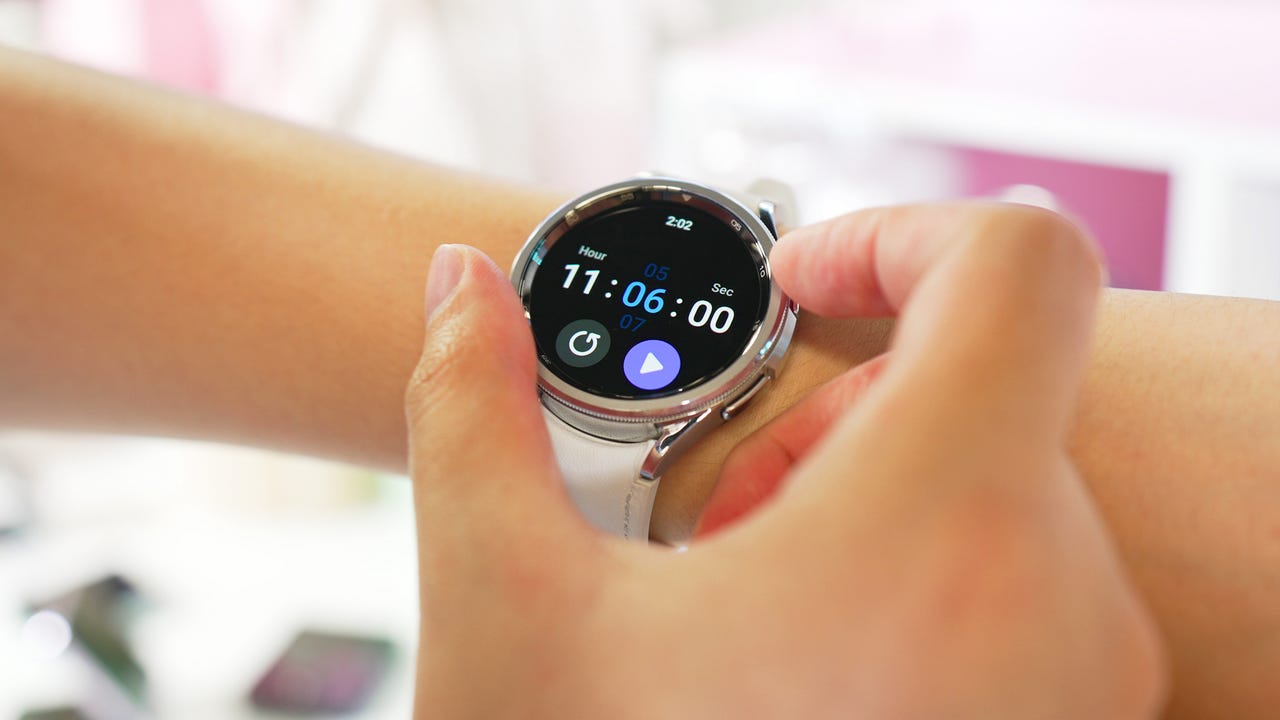'ZDNET Recommends': What exactly does it mean?
ZDNET's recommendations are based on many hours of testing, research, and comparison shopping. We gather data from the best available sources, including vendor and retailer listings as well as other relevant and independent reviews sites. And we pore over customer reviews to find out what matters to real people who already own and use the products and services we’re assessing.
When you click through from our site to a retailer and buy a product or service, we may earn affiliate commissions. This helps support our work, but does not affect what we cover or how, and it does not affect the price you pay. Neither ZDNET nor the author are compensated for these independent reviews. Indeed, we follow strict guidelines that ensure our editorial content is never influenced by advertisers.
ZDNET's editorial team writes on behalf of you, our reader. Our goal is to deliver the most accurate information and the most knowledgeable advice possible in order to help you make smarter buying decisions on tech gear and a wide array of products and services. Our editors thoroughly review and fact-check every article to ensure that our content meets the highest standards. If we have made an error or published misleading information, we will correct or clarify the article. If you see inaccuracies in our content, please report the mistake via this form.
10 settings I changed on my WearOS smartwatch to improve battery life

Google's Wear OS has had a resurgence over the past few years thanks to the Galaxy Watch, the OnePlus Watch 2, and the company's own Pixel Watch line. From attractive designs to improved performance and software capabilities, these are some of the best Android-powered smartwatches ever.
Also: The best smartwatches you can buy: Expert tested
Unfortunately, battery life is still a challenge for many of these devices. OnePlus may have cracked the code for multiday battery life on a Wear OS device, but the same can't be said for most wearables on the market. If you own a Wear OS watch, chances are you need to charge it at least once a day, which can be pretty inconvenient if you have a day of heavy use.
You may be wondering how you can extend the daily endurance of your watch's battery. Luckily, there are several ways to eke out extra juice during the day so your Wear OS device doesn't die before dinnertime. Below, we break down the 10 most effective ways to save your Wear OS watch's battery life. They apply to all recent Wear OS models, so you shouldn't have difficulty using them.
View at Amazon1. Turn off the always-on display
One of the biggest culprits for poor battery life on Wear OS watches is the always-on display. For some reason, companies continue to say this feature only drains your battery marginally during the day. In reality, that's never the case. The always-on display can be the difference between your watch lasting all day and dying before you get home in the afternoon. While it's one of the most convenient features to have enabled on your watch, it's best to turn this option off when you need the extra juice.
How to: On your watch, swipe down from the top of the screen, then tap the gear icon to access Settings. From there, scroll down to Display, tap "Always-on display," and turn the option off. Follow the same steps to turn it back on.
2. Switch to a watch face with fewer complications
Your watch face is a great tool for expressing your style and adding utility to make your Wear OS device as helpful as possible at a glance, but if you have too many data-reliant complications (we're talking three to five), your watch will pull new data in the background and use more energy. If you want to cut power consumption, you'll need something simpler with just a couple of complications.
Also: Google Pixel Watch 2 review: In one key area, it surpasses every other smartwatch
How to: Tap and hold on to your watch face to bring up the customization menu. You can then swipe between different preset faces and make changes to existing faces you've configured to remove things like data-hungry widgets. It's also smart to keep the color scheme a bit simpler.
3. Use automatic screen brightness
If your Wear OS watch's display is too dim, you may find yourself cranking it way up so you can see it in the sunlight. The problem is that if you keep the screen at max brightness all the time, you'll use more battery than you might realize. An easy way to get around this issue is to use auto-brightness, which will dim your watch screen when you don't need as much brightness to see.
How to: Swipe down from the top of the display to access quick settings, then tap the sun icon to view your brightness settings. From there, you'll have the option to turn up or down the display brightness and to enable "Auto brightness." On some watches like the Galaxy Watch 6, you may need to go to the Settings app and visit the Display section to find the toggle to turn on "Adaptive brightness," which does the same thing.
4. Get rid of power-hungry apps
When you install an app on your phone, it's common for it to automatically install on your watch. This approach is a convenient way to ensure the setup on your phone is reflected on your watch. If, however, you don't use apps on your watch and rely strictly on notifications, it's time to cull them. Not only do the apps eat up the small amount of storage on your Wear OS device, but they can also drain your battery when you aren't looking.
How to: On your Wear OS watch, access the apps list by pressing the power button once. Then, tap on the Play Store. From there, swipe down from the top of the display to find the "My Apps" button. You'll be presented with a list of all the apps you have installed on your watch. Find the one you want to get rid of, tap on it, then scroll to the bottom and tap "Uninstall."
5. Disable "Hey Google" detection
Having the convenience of a voice assistant on your wrist is great for quickly getting things done, and it's even more helpful when you can simply raise your wrist and begin to talk. As you might expect, though, keeping "Hey Google" detection turned on can make your Wear OS watch's battery drain pretty quickly since it's constantly using the microphone, waiting for those magic words to be spoken. Luckily, it's easy to turn this feature off.
How to: Swipe down on your watch's display, then tap the gear icon to access Settings. Then, go to the "Google" section and scroll down to find "Assistant." Tap on that option, and you'll be presented with the option to disable "Hey Google" detection.
6. Reduce screen timeout time
When you raise your wrist to check your watch, the screen will stay on for some time after you're done. Ideally, you want your display to dim as soon as your wrist falls back to your side, but if you've noticed your battery draining more than usual, it could be because your screen stays on for too long. Here's how to adjust how long it stays on.
Also: I changed 10 settings on my Android phone to drastically improve battery life
How to: Swipe down on the screen and tap the gear icon to go to Settings. Then, scroll down to Display > Screen timeout and choose either 15 seconds or 10 seconds. That way, your screen will turn off much sooner and save your battery.
7. Reduce how many notifications you get
By default, your Wear OS watch is configured to send every notification you get on your phone to your wrist. That approach can become overwhelming with constant dings and buzzes from social media apps. The notifications can also lead to excessive battery drain. All those dings and buzzes take energy. An easy way to fix that is by limiting notifications sent to your watch.
How to: On your watch, visit Settings > Apps & notifications > Notifications and choose "Show All" to see the full list of apps currently sending notifications. Then, tap on the app you want to silence and flick the toggle. You'll no longer receive the notifications from that app on your watch, but they'll continue to be sent to your phone so you aren't completely out of the loop.
8. Turn off location and Wi-Fi when you don't need them
Wear OS watches connect to the internet through your phone, relying on sensors to pull data and information. When your phone isn't in reach, your watch uses its Wi-Fi and GPS to keep you connected. If you tend to have your phone near you most of the time, there's no real reason to keep your Wi-Fi or location settings enabled on your watch, and turning them off when you aren't using them is a simple way to save some extra battery.
How to: To turn off Wi-Fi, go to Settings > Connectivity > Wi-Fi and flick the toggle. To disable location services and GPS, head to Settings > Location and turn off "Use location." You can follow the same steps to enable either feature later on.
9. Disable tilt-to-wake
This is a bit of a last-resort option, but it's a good one nonetheless. For your Wear OS watch to show the time when you raise your wrist, it needs to use a series of sensors to detect your wrist's movement. With excessive or unintentional use throughout the day, this feature can lead to excessive power consumption and leave you with a lot less juice. If you want to see whether changing this setting will save you any battery life (users have reported both no battery savings and increased battery life depending on the watch they own), here's how to turn the feature off.
Also: Regret buying your smartwatch? Try these 8 tips before you ditch it
How to: On your watch, go to the Settings app and scroll down to "Gestures." From there, you'll find a toggle to disable tilt-to-wake. To save even more battery life and avoid accidentally waking the device up, you can also disable touch to wake, but you'll need to then rely on pressing the crown to wake up the screen.
10. Use power-saving mode
Of course, the most obvious thing to do to save your Wear OS battery life is to enable power-saving mode. The name can vary depending on the watch you own, but it'll do the same thing: turn off certain features running in the background, dim the screen, reduce animations, and slow down performance enough to eke out more juice from your battery. It's a great mode when you're in a pinch and need your watch to last you the remainder of your day, or if you have a long day ahead and need the best battery life you can get.
How to: On your watch, visit Settings > Battery to enable "Battery saver." It might be called "Power saving" if you own a Galaxy Watch, but it'll perform the same functions.
